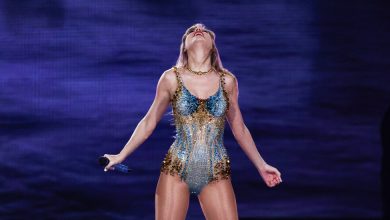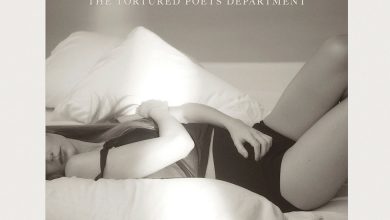Review: An Orchestra Offers a Novel View of Music History

Pity the 19th-century American composer, toiling away in the shadow of Beethoven in search of a homegrown sound, only to be overshadowed by yet another European: Antonin Dvorak, whose “New World” Symphony is played far more often than anything from the New World that preceded it.
Visiting the United States in the 1890s, Dvorak prophesied a future of American classical music founded on Black and Indigenous melodies. To an extent, that came true in the 20th century, but orchestras tended to overlook composers of color in favor of white, male ones — some of whom would come to be seen as national heroes, while their lesser-known compatriots would rely (and continue to rely) on passionate champions.
And Europeans still haunted concert programming — a product, the historian Joseph Horowitz has asserted, of a cultural shift in American classical music from a focus on composers to performers that, fueled by the rise of radio broadcasts and recordings, calcified the repertoire of our largest cultural institutions.
I’m being reductive, but the broad truth of this is that the myopic approach of much orchestral programming today — Eurocentric, with living composers rarely given the same pride of place as a Beethoven or Mahler — is nothing new.
Then there are artists like Leon Botstein, an indispensable advocate of the unfairly ignored, who brought his ensemble The Orchestra Now to Carnegie Hall on Thursday for an evening of works that, despite covering a range of nearly 150 years, felt as fresh as a batch of premieres.
Botstein belongs to a class of conductors and artistic directors — including Horowitz, as well as Gil Rose of the Boston Modern Orchestra Project, Ashleigh Gordon and Anthony R. Green of Castle of Our Skins, and more — who bring an endlessly curious and almost archaeological mind to their programming. They operate on such a small scale, they can hardly reverse the course of American classical music history; but each concert, each recording, is an essential step in a better direction.
On Thursday, Botstein and The Orchestra Now, a capable and game group of young musicians, took the latest of those steps with Julia Perry’s “Stabat Mater,” written in 1951, early in that composer’s short life; Scott Wheeler’s new violin concerto, “Birds of America,” featuring Gil Shaham; and George Frederick Bristow’s Fourth Symphony, “Arcadian,” from 1872.
Perry’s work, an episodic setting of the classic Latin text that has inspired composers for centuries, seems to rise from the depths, awakening slowly with the sounds of gravelly cellos that eventually give away to the brightness of a solo violin and the entrance of the vocalist: here, the mezzo-soprano Briana Hunter, who navigated her part’s surprising turns and plunges with smooth and characterful ease.
The score, like many American works from the mid-20th century, strikes a balance of dissonance and tonality. With a brief running time and modest scale, it is nonetheless dense, with thick textures emerging from its all-string ensemble and an affecting ambivalence in the final section of instrumental darkness and vocal ecstasy.
Wheeler’s likable concerto, which the orchestra premiered last weekend at the Fisher Center at Bard College, has elements of timelessness — its lyricism akin to that of Barber and Korngold’s famous violin concertos — but also postmodernism, with snippets of classics like Vivaldi’s “The Four Seasons.”
Despite the avian title, Wheeler doesn’t emulate birdsong as Messiaen famously did, but he does take inspiration from the calls of distinct voices, with brief, repeated phrases attached to specific instruments — such as the whistling runs from a piccolo and flute that open the piece.
Shaham, one of our sunniest violinists, entered accordingly with a singing melody on his highest string, and brought abundant warmth throughout. But he was also grippingly virtuosic in tricky, Sarasate-like passages of lyrical double-stops and left-hand pizzicato. In the finale, he engaged in a musical Simon Says, knocking on the back of his instrument and cuing the second violins to do the same, then setting up col legno tapping in the violas and high-pitched bird calls in the first violins. By the end, the winds joined in to evoke a wondrously bustling aviary.
Without an intermission, Botstein continued with Bristow’s burly symphony, one of those works that is more heard about than actually heard. But when it premiered, in the midst of 19th-century debates about the direction of American classical music — documented, with an analysis of the “Arcadian,” in the musicologist Douglas W. Shadle’s revelatory 2015 book “Orchestrating the Nation” — it enjoyed the rare success of repeated programming.
And on Thursday, you could hear why. With late-Romantic grandeur and American inspiration, the “Arcadian,” played at Carnegie in a new edition by Kyle Gann, charts an imagined journey westward with a changing musical landscape; a serene pause that conjures communal entertainment with a quote from Tallis’s “Evening Hymn”; a troublingly naïve and chauvinistic “Indian War Dance” that’s more of a European danse macabre; and a festive celebration upon arrival.
As a document of history, it is an embodiment, ripe for interrogation, of Manifest Destiny’s sins. But as music, Bristow’s score holds its own alongside European Romanticism while transparently aiming for a new, more distinct path. He was hardly alone in this effort. There was a moment when New York’s concert halls resounded with 19th-century American symphonies. It’s time they did again.
The Orchestra Now
Performed Thursday at Carnegie Hall, Manhattan.



